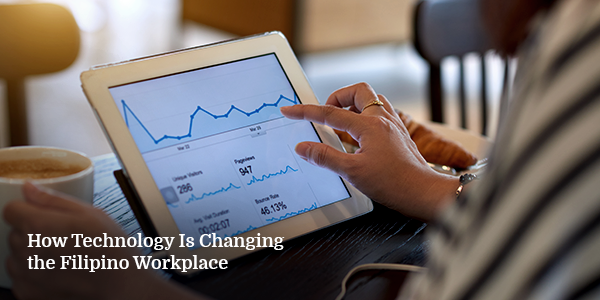The traditional workplace is on its way to oblivion because of the global digitization of technologies across different industries. In the Philippines, a new breed of a Filipino work culture reflecting changes in the way people work these days is also unfolding.
The Digital Workplace and What It Implies
The trends in the digital workspace will definitely have an impact on Filipino employees and employers. Both of them need to be technologically ready and responsive to this new workplace culture to stay relevant in their industry.
Unfortunately, studies show that organizations are not doing enough to help their employees cope with digital trends in the workplace. Approximately 47% of respondents in the study expressed the lack of company initiative in equipping them with technological know-how.
If you’re a recruitment firm in the Philippines, you need to take note of these possible challenges and implications that technology will be bringing about in the Filipino workplace so that you could better prepare them for the so-called New World of Work.
1. Increased use of mobile and cloud technologies
Files, instructions, checklists, reports, and other relevant information and data can now be stored in the cloud. In some organizations, employees don’t always have to go to the office to work. They could get the same things done as they would if they were physically present in the office as long as they’re connected to the internet.
2. The rise of virtual offices and new working styles
Virtual offices are commonplace, especially in the BPO industry where employees work with teams from different locations. This work setup makes it necessary for your company to invest in collaborative tools that will help everyone in the team to be on the same page even if they don’t get to hold meetings and discussions in person and in real time.
Outside of the BPO industry, companies are also introducing more flexible working arrangements for their employees. Again, this entails access to technologies that will help them remain productive and contribute to company goals.
3. The need for a digitally savvy workforce
We’re now on the threshold of a 4th Industrial Revolution, where machine learning and artificial intelligence are being tapped to optimize processes or improve efficiency in the workplace. This only shows that technology is evolving at an incredible pace, but not everyone can keep up with it.
Without a digitally-skilled workforce, though, your company’s journey to digital transformation may take a very long time to achieve.
How to Empower Your Employees in the Digital Workplace
Your HR team and recruitment firm could lead the way in making sure that your employees are ready and able to embrace changes in the workplace by working on the following areas:
Unlocking your employees’ skills to innovate and collaborate
To foster innovation and collaboration within your team, there should be a strong sense of leadership and vision among managers and officers. They should be highly committed to bridging the skills gap in the workforce by giving employees access to and training in collaborative technologies, so everyone in the team will be motivated to use such tools.
Educating the workforce on certain caveats
Massive amounts of data are being moved across devices using cloud, and your employees have to be aware of the implications of misusing them.
Educating employees about the proper use of different tools in the workplace makes them more confident in using it to perform their tasks. At the same, mastery of these technologies helps reduce risks of failure to follow standard rule and procedure in handling company or customer data.
Focusing on functionality
Technology is meant to drive employees’ productivity, as well as enhance work processes that will help companies improve their products and services. That said, be sure that you have the right hardware or software solutions for your teams’ use.
Otherwise, when employees feel that you’re incorporating technology without purpose other than to merely to keep up with trends, they might only regard it as a barrier that prevents them from working efficiently and choose to stay away from using technology to do their work altogether.
Technology is now a necessity and no longer an option. But to reap its benefits in your organization, you first must develop a culture of readiness among your employees so that technology will become a useful instrument in achieving success in the workplace.














